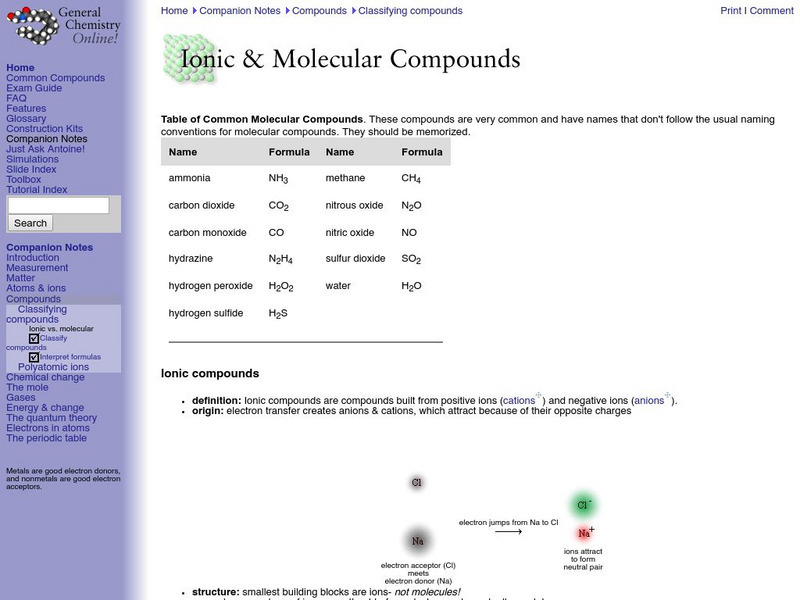Wisc-Online
Wisc Online: Lewis Dot Structures of Covalent Compounds
Short slide show provides basic information about drawing Lewis dot structures for covalent compounds. Starts with anatomy of the atom, and then shows the relationship between atomic particles and the Periodic Table of Elements. Offers...
State University of New York
State University of New York: Boiling Points of Simple Organic Compounds
This simulation explores the effects of molecular structure on normal boiling points for a series of related organic compounds.
Chiral Publishing
Chiral Publishing: An Introduction to Chemistry: Molecular Compounds: Audio Book
Learn all about molecular structures in this easy-to-understand, audio book. See how valence electrons determine how atoms bond together, and look at the bonding inside some of the most common molecules around you.
Chiral Publishing
Chiral Publishing: An Introduction to Chemistry: Molecular Structure: Audio Book
This audio book, narrated by Mark Bishop, describes the formation of covalent bonds. Lewis dot structures help highlight the valence electrons used to determine which bonds form. Also find links to animations and tutorials about other...
Frostburg State University
General Chemistry Online: Ionic and Molecular Compounds
Provides a good outline of the concepts involved in ionic and covalent bonding, with links to definition of terms. Features a list of common molecular compounds and a chart that compares ionic and molecular compounds.
Chiral Publishing
Chiral Publishing: An Introduction to Chemistry: Molecular Geometry From Lewis Structures
This audio book, by author Mark Bishop, describes how to draw geometric sketches of molecular compounds using lewis dot structures. Many examples are given to increase understanding. Also find links to animations and tutorials for other...
Chiral Publishing
Chiral Publishing: An Introduction to Chemistry: Molecular Structures: Olestra
View a 3-D model of olestra, and compare it to a similar structure of a triglyceride. Also see the molecules that make up olestra. All compounds can be manipulated and studied from every angle.
Sophia Learning
Sophia: Polarity of Molecular Compounds: Lesson 2
This lesson will demonstrate how to use molecular shape to determine if a molecule is polar or nonpolar. It is 2 of 2 in the series titled "Polarity of Molecular Compounds."
Other
Science Alive: Synthetic vs. Natural: What's the Difference?
Through this reading, students will learn that a substance's properties arise from its molecular structure, not from how it's made (i.e., synthesized by people or found in nature). There is no fundamental difference between natural and...




